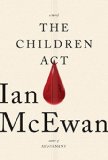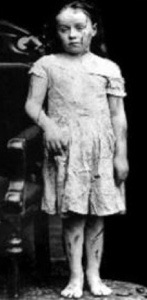Summary | Excerpt | Reading Guide | Reviews | Beyond the Book | Read-Alikes | Genres & Themes | Author Bio

Critics' Opinion:
Readers' Opinion:
First Published:
Sep 2014, 240 pages
Paperback:
Apr 2015, 240 pages
 Book Reviewed by:
Book Reviewed by:
Suzanne Reeder
Buy This Book
This article relates to The Children Act
During the 19th century many children in the United Kingdom and the United States suffered from hardship, neglect, and abuse. Poor children in Victorian England had to work, frequently long hours and in dangerous conditions (in coal mines or textile mills, for example), in order to help financially support their families. In the U.S., the Civil War left many children orphaned and destitute. In addition, the Industrial Revolution and flood of immigration created a society ripe for child exploitation. Due to their size, children could fit in small spaces in mines or factories, and could be paid less than adults. They often had to forgo school and were forced to work in hazardous environments.
Although there were established societies devoted to the prevention of cruelty to animals in both the UK and the U.S., it wasn't until the late 1800s that significant legislative and public attention finally started to focus on the welfare of children. After witnessing cruelty and neglect, social reformers made efforts to garner rights on children's behalf. Subsequent decades brought further notable improvements. The Children Act of 1989 is one example and serves as the basis for Ian McEwan's novel, The Children Act. In the UK the act gave every child the right to protection from abuse and exploitation and stated that the child's welfare—considering a child's physical, emotional, and educational needs, among other factors—is the "paramount consideration."
 The U.S. was several years ahead of the UK in regards to legal protection for children. Major efforts began with the case of Mary Ellen McCormack, also known as Mary Ellen Wilson. Mary Ellen was a little girl living in the Hell's Kitchen neighborhood of Manhattan. Born in 1864 and orphaned as a baby, she had been adopted by Thomas and Mary McCormack. Shortly after the adoption, Thomas died and Mary remarried. In a 2009 New York Times article that recounted the case, Mary was described as "unhappy and overburdened." She started to physically abuse Mary Ellen.
The U.S. was several years ahead of the UK in regards to legal protection for children. Major efforts began with the case of Mary Ellen McCormack, also known as Mary Ellen Wilson. Mary Ellen was a little girl living in the Hell's Kitchen neighborhood of Manhattan. Born in 1864 and orphaned as a baby, she had been adopted by Thomas and Mary McCormack. Shortly after the adoption, Thomas died and Mary remarried. In a 2009 New York Times article that recounted the case, Mary was described as "unhappy and overburdened." She started to physically abuse Mary Ellen.
In late 1873 the abused child attracted the attention of her neighbors. They reported a complaint to the Department of Public Charities and Correction, which administered the city's almshouse, insane asylums, and orphanages, among other institutions. The investigator assigned to Mary Ellen's case, Etta Wheeler, was so shocked and outraged at Mary Ellen's condition that she decided to take action. Since there were no child-protection laws, she shrewdly approached the American Society for the Prevention of Cruelty to Animals. The society's founder, Henry Bergh, concluded the abused and neglected child needed the protection of the state. He recruited a prominent lawyer, Elbridge Gerry, who took the case to the New York State Supreme Court and argued that there was good reason to believe Mary Ellen would suffer irreparable harm unless she was removed from her home. Her case led Bergh, Gerry, and the philanthropist John D. Wright to found the New York Society for the Prevention of Cruelty to Children in 1874. According to the NYSPCC's website, it was the first child protection agency in the world.
Mary Ellen's court statement is published on the organization's website. When she spoke before the court, she referred to her adoptive mother as Momma and said, "I am never allowed to play with other children. Momma has been in the habit of whipping me almost every day. She used to whip me with a twisted whip—a rawhide...I have now on my head two black and blue marks which were made by Momma with the whip, and a cut on the left side of my forehead which was made by a pair of scissors in Momma's hand...I do not want to go back to live with Momma because she beats me so."
Mary Ellen's adoptive mother was charged and found guilty of several accounts of assault and battery. The child never returned to her and was later placed in a loving home, married, raised a family, and died at the age of 92 in 1956. The New York Times reported that "by all accounts, she was a superb and caring mother."
According to an article published by Lorain County Children Services in Ohio, other communities followed the lead of New York and began to form separate Societies for Prevention of Cruelty to Children. Laws were written to protect children from abuse and neglect. Some SPCCs became "an arm of the law, took a rescuing stance, and aimed their services at punishing offenders," while others, such as Boston and Cleveland, were more concerned with prevention than punishment.
About seven years after the Mary Ellen case, changes were starting to occur in Great Britian. In 1881 a Liverpool banker named Thomas Agnew traveled to New York and visited the NYSPCC. He was so impressed by what he saw that he returned to England and started the Liverpool Society for the Prevention of Cruelty to Children. In 1884 the London Society for the Prevention of Cruelty to Children was established. One of its joint secretaries, the Reverend Benjamin Waugh, lived in Greenwich, London, and witnessed appalling levels of deprivation and cruelty. He became committed to drawing public and government attention to the plight of children. By 1889 the London Society had 32 branches throughout England, Wales, and Scotland. It was the job of the investigator for each branch to report child abuse and neglect. In 1889 the Society changed its name to the National Society for the Prevention of Cruelty to Children. Waugh was appointed as director.
The NSPCC's website states that, largely as a result of five years of lobbying by Waugh and his supporters, the first Prevention of Cruelty to Children Act was passed in 1889. Commonly known as the "children's charter," it enabled the state to intervene, for the first time, in relations between parents and children. Police could arrest anyone found ill-treating a child, and enter a home if a child was thought to be in danger. The Act included guidelines on the employment of children and outlawed begging.
During the late 1800s and throughout the 20th and 21st centuries, many other significant changes have been implemented on behalf of children. These developments were noted in a timeline and history of child protection, published in The Guardian in May 2005. One was The Punishment of Incest Act (1908), which made sexual abuse within families a matter for state jurisdiction instead of intervention by the clergy. Another occurred in 1974, with the inquiry into the death of Maria Cowell at the hands of her stepfather. The report from the inquiry led to the development of area child protection committees in England and Wales. These committees coordinate local efforts to safeguard at-risk children.
By comparison, other countries vary in their protection and policies toward children. Humanium, a non-government organization dedicated to stopping violations of children's rights throughout the world, lists on its website a ranking of 196 countries. Liechtenstein is the country with the best conditions for children. The UK ranks at 15 and the U.S. is 56. The U.S.'s ranking is attributable to problems regarding poverty, health care, child abuse, juvenile law, and other issues. Chad is last, meaning it has the most serious offenses against children. Thailand, a country often criticized for the trafficking of children for commercial sexual exploitation, is ranked at 102. According to a report by the United States Department of Labor, in 2013 Thailand made a "moderate advancement" with efforts to eliminate the worst forms of child labor. The government enacted the Transnational Organized Crime Act and ratified the UN Trafficking in Persons Protocol in order to strengthen frameworks on transnational organized crimes, including the worst forms of child labor and human trafficking. However, the same report noted that children in Thailand continue to engage in child labor in agriculture and "in the worst forms of child labor in commercial sexual exploitation." The report also concluded that the country's enforcement efforts remain weak, and the government lacks current nationwide data on child labor.
In recognition of the continued importance of children's basic rights around the globe, the Nobel Peace Prize in 2014 was awarded to Indian activist Kailash Satyarthi whose organization Bachpan Bachao Andolan, or Save the Childhood Movement, fights against child labor and trafficking; and to Pakistani teenager Malala Yousafzai, an activist for girls' right to education. Yousafzai was shot in the head by the Taliban in 2012 for her stance.
Picture of Mary Ellen McCormack from recognizeabuse.org
Filed under Society and Politics
![]() This "beyond the book article" relates to The Children Act. It originally ran in November 2014 and has been updated for the
April 2015 paperback edition.
Go to magazine.
This "beyond the book article" relates to The Children Act. It originally ran in November 2014 and has been updated for the
April 2015 paperback edition.
Go to magazine.





The Funeral Cryer by Wenyan Lu
Debut novelist Wenyan Lu brings us this witty yet profound story about one woman's midlife reawakening in contemporary rural China.
Your guide toexceptional books
BookBrowse seeks out and recommends the best in contemporary fiction and nonfiction—books that not only engage and entertain but also deepen our understanding of ourselves and the world around us.